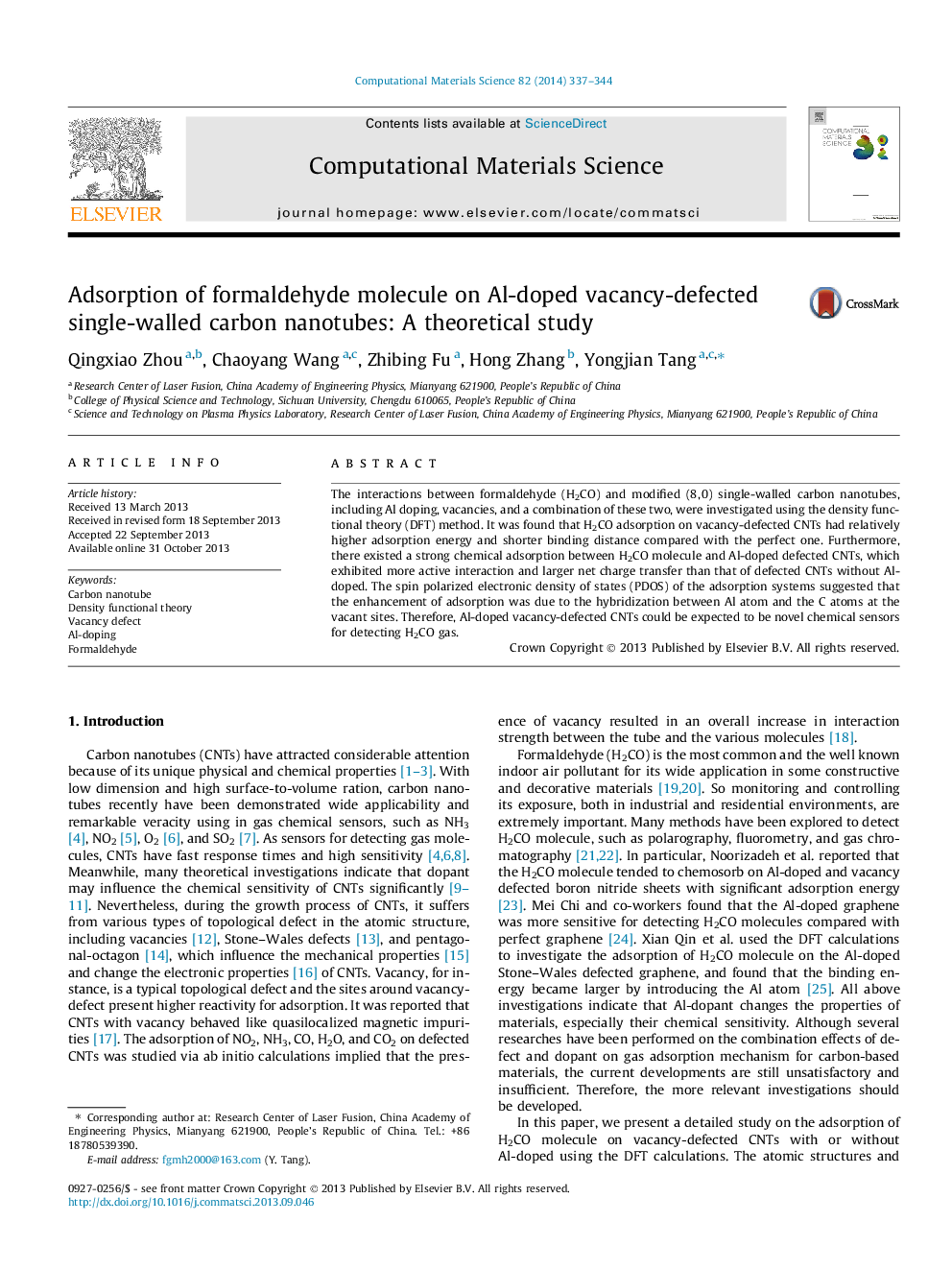| Article ID | Journal | Published Year | Pages | File Type |
|---|---|---|---|---|
| 7961114 | Computational Materials Science | 2014 | 8 Pages |
Abstract
The interactions between formaldehyde (H2CO) and modified (8, 0) single-walled carbon nanotubes, including Al doping, vacancies, and a combination of these two, were investigated using the density functional theory (DFT) method. It was found that H2CO adsorption on vacancy-defected CNTs had relatively higher adsorption energy and shorter binding distance compared with the perfect one. Furthermore, there existed a strong chemical adsorption between H2CO molecule and Al-doped defected CNTs, which exhibited more active interaction and larger net charge transfer than that of defected CNTs without Al-doped. The spin polarized electronic density of states (PDOS) of the adsorption systems suggested that the enhancement of adsorption was due to the hybridization between Al atom and the C atoms at the vacant sites. Therefore, Al-doped vacancy-defected CNTs could be expected to be novel chemical sensors for detecting H2CO gas.
Related Topics
Physical Sciences and Engineering
Engineering
Computational Mechanics
Authors
Qingxiao Zhou, Chaoyang Wang, Zhibing Fu, Hong Zhang, Yongjian Tang,
